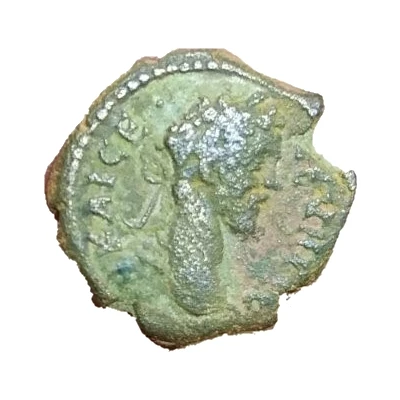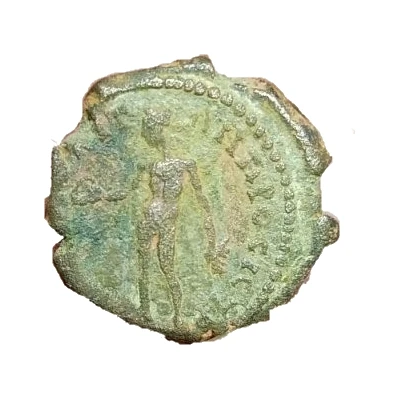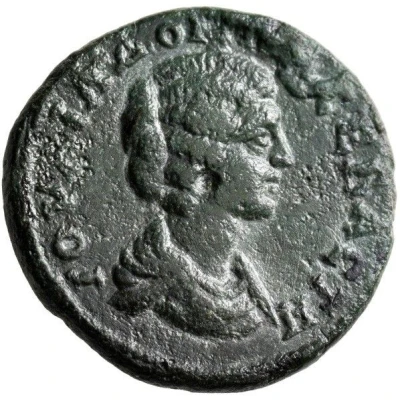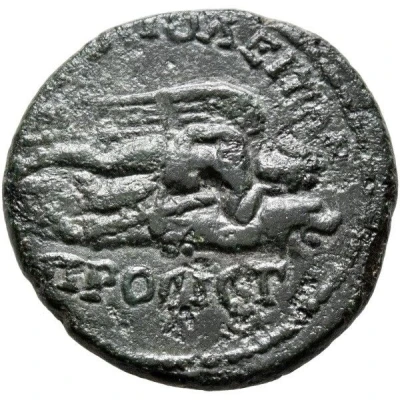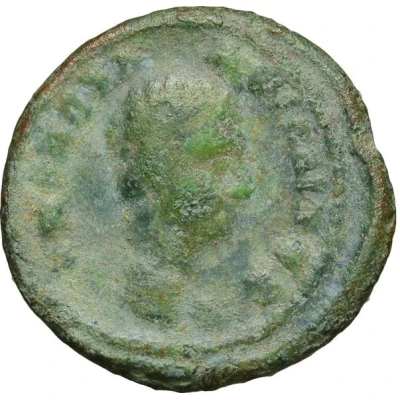
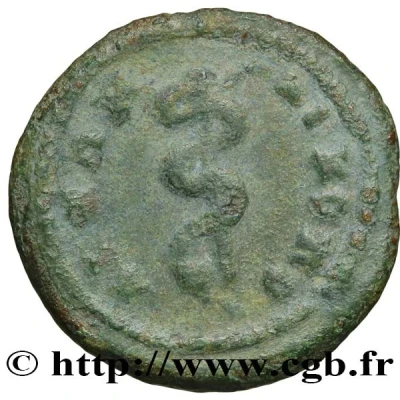

© CGB
Assarion - Diadumenianus NIKOΠOΛITΩN
| Copper | 3.62 g | 18 mm |
| Issuer | Nicopolis ad Istrum (Moesia Inferior) |
|---|---|
| Emperor | Diadumenian (Marcus Opellius Antoninus Diadumenianus) (217-218) |
| Type | Standard circulation coin |
| Years | 217-218 |
| Value | Assarion (0.1) |
| Currency | Drachm |
| Composition | Copper |
| Weight | 3.62 g |
| Diameter | 18 mm |
| Shape | Round (irregular) |
| Technique | Hammered |
| Demonetized | Yes |
| Updated | 2024-10-06 |
| Numista | N#77437 |
|---|---|
| Rarity index | 91% |
Reverse
Staff of Aesculapius with a coiled snake
Script: Greek
Lettering: NIKOΠOΛITΩN
Translation: Nicopolis
Edge
Plain
Comment
A complete bronze coinage system exists for Macrin and his son Diadumenian, comprising coins of 5, 4, 3, 2 and 1 assaria, with only the 5 and 3 coins bearing Greek marks. J.-P. Callu, in his 1969 thesis, op. cit. p. 61, noted an average weight of 2.88 g for 6 coins of the assarion module. Nicopolis was located on the Istrus, a tributary of the Danube. Initially part of the province of Thrace, the city later became part of the province of Lower Mesia. The coinage of Nicopolis began under Antoninus and lasted until Gordian III. Nicopolis had been built by Trajan to commemorate his victory over the Dacians. Under the Antonines, coins bear the names of the legates (hegemon) of the province of Thrace when Nicopolis was attached to that province. On the coins, the name of Nicopolis is inscribed "Nikopoleitwn pros Istron". On September 28, 1396, Bajazet crushed the Frankish-Hungarian coalition here, opening the gates of the Balkans to the Turks for five centuries.Interesting fact
One interesting fact about this coin is that it features a rare image of the Roman emperor Diadumenianus as a child, depicted on the reverse side of the coin. This image is unique among Roman coins and provides a glimpse into the life and family of the emperor.
